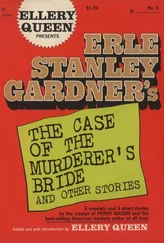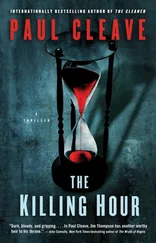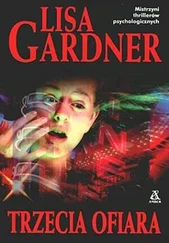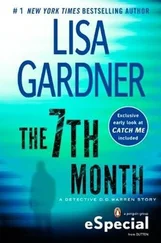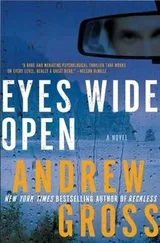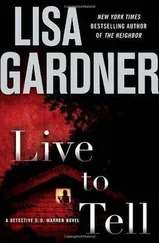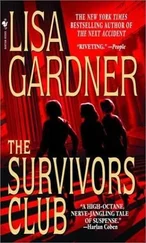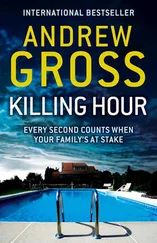Then she was down on her hands and knees, once again digging in the mud while her eyes took on a feverish light. She would find a rock. She would gouge out the boards. And then she would climb out of this pit, just like Spider Man. She would get to the top, she would find coolness, find water, find tender green things to eat.
She, Tina Krahn, knocked-up college student and madman’s current plaything, would finally be free.
Lloyd Armitage, USGS palynologist and Ray Lee Chee’s new best friend, met them shortly after noon. Five minutes later, Mac, Kimberly, and Nora Ray were piling into a conference room Armitage had set up as his traveling lab. It was a strange entourage, Mac thought, but then this was a strange case. Kimberly looked bone-tired but alert, wearing that slightly edgy look he’d come to know so well. Nora Ray was much harder to read. Her face was blank, shut down. She’d made a big decision, he thought, now she was trying not to think about it.
“Ray Lee Chee says you’re working some kind of homicide case,” Armitage stated.
“We have evidence from a scene,” Mac answered. “We need to trace it back to the original source. I’m afraid I can’t tell you much more than that, other than whatever you have to tell us, we needed to have heard it yesterday.”
Armitage, an older man with bushy hair and a thick brown beard, arched a curling eyebrow. “So that’s how it is. Well, for the record, pollen analysis isn’t as specific as botany. Most of my job is taking soil samples from various field sites. Then I use a little bit of hydrochloric acid and a little bit of hydrofluoric acid to break apart the minerals in the sediment. Next, I run everything through sieves, mix that with zinc chloride, then place it in a medical centrifuge until voilà, I have a nice little sample of pollen, fresh from the great outdoors-or from several thousand years ago, as the case might be. At that point, I can identify the general plant family that deposited the pollen, but not a specific species. For example, I can tell you the pollen is from locust, but not that it’s from a bristly locust. Will that help?”
“I’m not sure what a locust is,” Mac said. “So I guess whatever you discover, it’ll be more than what we knew before.”
Armitage seemed to accept that. He held out his hand and Mac gave him the sample.
“That’s not pollen,” the palynologist said immediately.
“You’re sure?”
“Too big. Pollen is roughly five to two hundred microns or considerably smaller than the width of human air. This is closer to the size of sediment.”
The palynologist didn’t give up, however. He opened the glass vial, shook out a small section of the dusty residue onto a slide, then slid it under a microscope. “Huh,” he said. Then “huh” again.
“It’s organic,” Armitage told them after another minute. “All one substance rather than a mix of various residues. Seems to be some kind of dust, but coarser.” His bushy head popped up. “Where did you find this?”
“I’m afraid I can’t tell you that.”
“Are there other samples you found with it?”
“Water and uncooked rice.”
“Rice? Why in heaven’s name did you find rice?”
“That’s the million-dollar question. Got any theories?”
Armitage frowned, wagged his eyebrows some more, then pursed his lips. “Tell me about the water. Have you brought it to a hydrologist?”
“Brian Knowles examined it this morning. It has an extremely low pH, three-point-eight, and high… salinity, I guess. It registers fifteen thousand microsiemens per centimeter, meaning there might be lots of minerals or ions present. Knowles believes it comes from a mine or was polluted by organic waste.”
Armitage was nodding vigorously. “Yes, yes, he’s thinking the coal counties, isn’t he?”
“I think so.”
“Brian’s good. Close, just missed one thing.” Lloyd slid out the slide and then did the totally unexpected by dabbing his index finger into the sample and touching it to his tongue. “It’s unusually fine, that’s the problem. In its coarser form, you would have recognized it yourself.”
“You know what it is?” Mac asked sharply.
“Absolutely. It’s sawdust. Not pollen at all, but finely ground wood.”
“I don’t get it,” Kimberly said.
“Sawmill, my dear. In addition to coal mines, the southwestern part of the state also has a lot of timber industry. This sample is sawdust. And, if these samples are supposed to go together…”
“We hope so,” Mac said.
“Then your water’s pH is due to organic waste. See, if mill wastes are not disposed of properly, the organic matter leaches into a stream, where it leads to bacterial buildup, eventually suffocating all other life-forms. Has Brian tested the sample for bacteria yet?”
“The amount’s too small.”
“But the high salinity,” Armitage was muttering. “Must be minerals of some kind. Pity he can’t test it more.”
“Wait a minute,” Kimberly said intently. “You’re saying this is from a mill, not a mine?”
“Well, I don’t generally associate sawdust with coal mines. So yes, I’m going to say a lumber mill.”
“But that could give you acidic water?”
“Contamination is contamination, my dear. And with a pH reading of three-point-eight, your water came from an extremely contaminated source.”
“But Knowles indicated this water is at a crisis,” Mac said. “Aren’t mills regulated for how they dispose of waste?”
“In theory, yes. But then, there’s a lot of lumber mills in this state and I wouldn’t be surprised if some of the smaller, backwoods operations fall through the cracks.”
Nora Ray had finally perked up. She was looking at the palynologist with interest. “What if it were a closed mill?” she asked quietly. “Some place shut down, abandoned.” Her gaze flickered to Mac. “That would be his kind of place, you know. Remote and dangerous, like something from a B-grade horror movie.”
“Oh, I’m sure there are plenty of abandoned mills in the state,” Armitage said. “Particularly in the coal counties. That’s not a very populated area. And, frankly, not a bad location for a horror movie.”
“How so?” Mac asked.
“It’s an impoverished area. Very rural. People first moved out there to get their own land and be free from government. Then the coal mines opened and attracted hordes of cheap labor, looking to make a living. Unfortunately, farming, timber, or mining hasn’t made anyone rich yet. Now you just have a broad expanse of bruised and battered land, housing a bruised and battered population. People still eke out a living, but it’s a hard life and the communities look it.”
“So we’re back to seven counties,” Mac murmured.
“That would be my guess.”
“Nothing more you can tell us?”
“Not from a minute sample of sawdust.”
“Shit.” Seven counties. That just wasn’t specific enough. Maybe if they’d started yesterday or the day before. Maybe if they had hundreds of searchers or what the hell, the entire National Guard. But three people, two of them not even in law enforcement…
“Mr. Armitage,” Kimberly spoke up suddenly. “Do you have a computer we can use? One with Internet access.”
“Sure, I have my laptop.”
Kimberly was already up out of her chair. Her gaze went to Mac and he was startled by the light he now saw blazing in her eyes. “Remember how Ray Lee Chee said there was an ology for everything?” she asked excitedly. “Well, I’m about to put him to the test. Give me the names of the seven coal-producing counties and I think I can find our rice!”
Quantico, Virginia
Читать дальше

